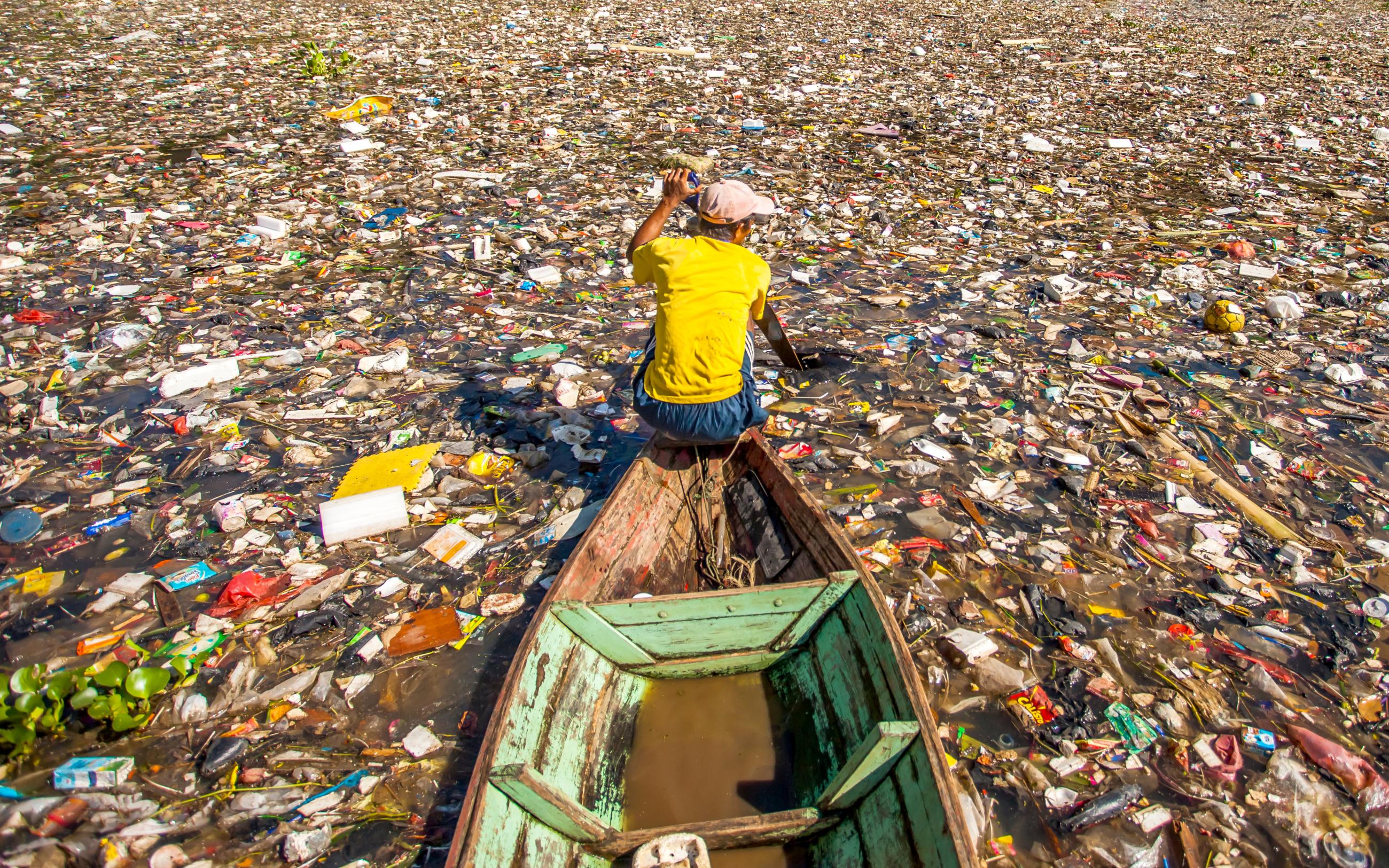A World Without Plastic Pollution? A New Paper Shows It’s Possible
University of California experts lay out path to nearly nixing plastic waste in new Science study
Negotiators have the ability to nearly eliminate plastic pollution by 2050 through a developing international treaty, according to a study published today in Science.
Leaders could pick any of several policy combinations addressing plastic’s production, use or disposal to achieve this goal, the University of California team found. Some packages, like one the paper proposes, could slash planet-warming emissions, too.

“There are multiple pathways available to negotiators,” said A. Samuel Pottinger, senior data scientist at UC Berkeley’s Eric and Wendy Schmidt Center for Data Science and Environment (DSE). “But it does require ambition.”
Plastic is a pervasive part of everyday life, used in everything from diapers to furniture. Society’s manufacturing reflects this reliance. As of 2021, humankind had produced 11 billion metric tons of it, or the equivalent of 1.6 billion elephants. This vast supply leads to significant consequences. Plastic production, use and disposal harms ecosystems, increases human health risks, accelerates climate change and exacerbates societal inequities.
Global decision-makers have been working together since 2022 to address what the United Nations calls “a serious environmental problem at a global scale.” They will meet in South Korea this month to finalize the first-ever international legally binding treaty on plastic pollution.
The paper, “Pathways to reduce global plastic waste mismanagement and greenhouse gas emissions by 2050,” builds on the team’s past efforts to inform the talks. They released last November the Global Plastic Policy Tool, an open-source, AI-powered model. Treaty negotiators have used its forecasts, based on groundbreaking regionalized data, to explore the effectiveness of eight key interventions under consideration. The tool also underpins this paper.
“The impact that we're really hoping to see on the treaty, and I think that we've started to see in these individual conversations, is just that it is data informed,” said Pottinger. “So that as the treaty comes to its final conclusion before ratification, folks are aware of how much progress they've actually made, at least according to the best science that we have available right now.”
Paper authors include Berkeley’s Pottinger, Ciera Martinez, Magali de Bruyn and Carl Boettiger; UC Santa Barbara’s Roland Geyer, Nivedita Biyani, Neil Nathan, Molly R. Morse and Elijah Baker. Douglas McCauley, a co-director of DSE, holds appointments at both universities. The Berkeley center is shared by the College of Computing, Data Science, and Society and the Rausser College of Natural Resources.

Fighting a ‘sense of inevitability’ with data-driven solutions
As of 2020, 15% of the 425 million metric tons (Mt) of plastic waste generated each year was mismanaged, meaning it wasn’t placed in a landfill, incinerated or recycled, the study said. By 2050, the amount of plastic pollution annually will nearly double to 121 Mt with a business-as-usual approach.
“If you were to take all of that plastic that was going to be mismanaged between now and 2050 and pile it on top of the New York skyline, it would reach up so high that it would disrupt general aviation,” Pottinger said.
That future could be avoided by using any number of intervention combinations, the paper found. But picking the right mix of policies could also yield significant climate benefits, an incentive policymakers have indicated could help get the treaty over the finish line, Pottinger said. In a business-as-usual future, greenhouse gas emissions related to plastic would jump 37% from 2020 levels to 3.35 gigatons of carbon dioxide equivalent in 2050.
Experts proposed a four-intervention solution to illustrate how leaders could address the plastic and climate crises:
- they could require at least 40% of global plastic waste be recycled across sectors;
- cap new plastic production at 2020 levels;
- invest $50 billion in expanding waste management infrastructure; and,
- implement a high packaging consumption tax.
These actions alone could nearly eliminate plastic pollution, reducing it to an estimated 11 Mt in 2050. It would also cut plastic-related emissions by one-third to 2.09 gigatons of carbon dioxide equivalent in the same year, the paper said. The emissions savings from this package are the equivalent of taking nearly 300 million vehicles off the road for a year, Pottinger said.
“There is a sense of inevitability that plastic is so ingrained in our way of life, so how could a treaty like this ever be effective,” said Pottinger. “If nothing else, the four-policy package shows that it is possible. The permutation of policies used to get there might be different than what we anticipated. But we don't want anyone to hide behind the idea that it isn't possible."
For More Information
- Read the full Science paper: “Pathways to reduce global plastic waste mismanagement and greenhouse gas emissions by 2050.”
- Read more from UC Santa Barbara: A new study in Science maps out a comprehensive plan to eliminate plastic pollution by 2050.
- Access the Global Plastic Policy Tool.
- See the open source code for the Global Plastic Policy Tool.
